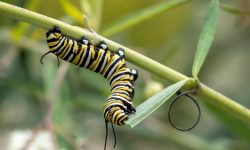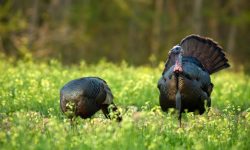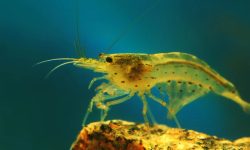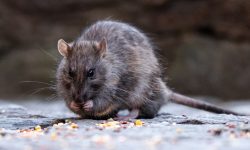Beetles are among the most widespread and adaptable insects on Earth. With more than 400,000 identified species, they occupy forests, deserts, grasslands, wetlands and even underwater environments. Their diets are equally varied, ranging from fresh plant matter to fungi, small animals, carrion and decomposing organic material. Understanding what beetles eat in nature reveals not only how they survive but also how they play crucial roles in maintaining ecological balance.
In the wild, beetles feed according to their mouthpart structure, life stage and preferred habitat. Some beetles are strict herbivores feeding on leaves, stems or roots. Others are powerful predators capable of hunting insects, worms or larvae. Many species specialize in breaking down decaying wood or animal remains, turning complex organic matter into usable nutrients for ecosystems. Because of this diversity, beetles collectively shape ecosystems more than almost any other insect group.
Understanding the Beetle Diet

Beetles consume an extensive range of foods because their feeding habits evolved to fill numerous ecological niches. Their mandibles allow for chewing, grinding or tearing, meaning they can process tough plant fibers, wood, fungi, animal material or even hard seeds. This adaptability is one major reason beetles dominate nearly every environment on Earth. The diet of one beetle species may be completely different from that of another, even within the same family.
Another key factor shaping what beetles eat is their life stage. Larvae often require protein-rich or energy-dense foods to fuel rapid growth. Many larvae spend long periods inside wood, soil or plant stems, where they feed continuously. Adults, in contrast, often consume lighter foods like nectar, pollen or plant tissues. This separation of feeding habits between larvae and adults reduces competition within species and increases survival.
Beetles also play vital ecological roles thanks to their diets. Plant-feeding beetles help regulate vegetation. Predatory beetles maintain insect population balance. Scavengers break down dead animals, while decomposers recycle plant material and enrich soil. By examining the foods beetles consume, we gain insight into their survival strategies and the essential functions they perform across ecosystems.
20 Foods Beetles Commonly Eat in Nature
1. Leaves
Leaves are a primary food source for many herbivorous beetles, including leaf beetles and weevils. Their mandibles allow them to chew through tender foliage with ease, providing essential nutrients that support growth and reproduction. They often remain on the same plant for extended periods, especially during the larval stage.
Larvae depend heavily on leaves because they need continuous food intake to support rapid development. Their feeding patterns sometimes leave distinctive damage on plants, such as skeletonized leaves where only the veins remain. These signs are often used to identify beetle presence in natural habitats.
In ecosystems, leaf-eating beetles help maintain plant diversity. Although heavy infestations can harm crops, in natural environments they prevent dominant plants from overgrowing and help maintain balanced vegetation communities.
2. Wood
Wood serves as an essential food source for many beetle larvae, particularly longhorn beetles and wood-boring species. These larvae burrow deep into trunks, branches and logs where they extract energy from cellulose and lignin. This slow but steady nutrient supply allows larvae to live for months or even years inside wood.
Adults of some species also feed on bark or sap found beneath the wood surface. These beetles may use their powerful mandibles to chew through outer layers, accessing nutrient-rich tissues that support their survival. Wood provides a stable habitat as well as food.
Wood-boring beetles are crucial to forest ecosystems. Their tunneling helps aerate wood, break down dead trees and introduce fungi and microbes that accelerate decomposition. This process enriches the forest floor with nutrients.
3. Nectar
Nectar is an important food source for many adult beetles, including scarab beetles and soldier beetles. They visit flowers to drink nectar, gaining quick energy necessary for flight and mating. Their feeding behavior makes them frequent pollinators.
Though larvae rarely consume nectar, adults rely on it during warm seasons when flowers are abundant. Beetles often become covered in pollen as they move between blooms, making them accidental yet effective pollinators for many plant species.
In ecosystems, nectar-feeding beetles contribute to plant reproduction while also helping control smaller insects that gather around flowers. Their combined roles enhance biodiversity in meadows, prairies and forest edges.
4. Fruits
Many beetles consume ripe or decaying fruits, especially sap beetles and scarab beetles. They puncture fruit skins to access sweet juices, fermented pulp and microorganisms that provide energy-rich nutrition. Fruit-eating is especially common in humid or tropical environments.
Larvae thrive inside fallen or rotting fruit. The soft texture and high moisture content make fruit an ideal habitat for growth. These larvae feed continuously, sometimes forming cavities inside fruit bodies as they develop.
In nature, fruit-consuming beetles help break down fallen fruit, accelerating decomposition and returning nutrients to the soil. They also disperse yeast and microorganisms that influence forest nutrient cycles.
5. Seeds
Seeds offer dense nutrients for beetles such as weevils and seed beetles. These insects bore small holes into seeds and consume the starchy interiors. Seed-feeding beetles are highly specialized and often target specific plant species.
Female beetles usually lay eggs directly inside seeds. When larvae hatch, they immediately begin feeding on the seed’s interior, which provides concentrated energy for growth. This strategy minimizes larval exposure to predators.
Although seed-feeding can reduce plant reproduction, in natural ecosystems it helps maintain balance by controlling dominant plant species and promoting more diverse plant communities.
6. Pollen
Pollen is a protein-rich food widely consumed by pollen beetles and various scarabs. When beetles crawl inside flowers, they feed on pollen grains that provide crucial nutrients for adult beetle health and reproduction.
Adult beetles benefit from the energy and protein in pollen, especially during mating seasons when energy demand is high. Because pollen is abundant in many ecosystems, it supports large beetle populations during warm months.
As beetles move between flowers, they unintentionally transfer pollen, aiding in pollination. This makes pollen-feeding beetles ecologically valuable for many wildflower species.
7. Fungi
Fungi are an important dietary component for many species, especially fungus beetles and those living in decaying wood. They feed on spores, hyphae and fungal tissue, obtaining nutrients that are difficult for other insects to digest.
Larvae often develop inside rotting logs or fungus-rich environments where moisture and organic matter are abundant. These habitats provide stable conditions for extended larval stages.
Fungus-feeding beetles play an important role in forest nutrient recycling by breaking down fungal growth and spreading fungal spores through their movement.
8. Grass
Grass-eating beetles are common in meadows, pastures and agricultural fields. They feed on grass blades, stems and sometimes roots. Grass provides moisture, minerals and plant fiber needed for survival.
Larvae often target underground grass roots or stems, which offer protection from predators and stable food sources. Their feeding may create small patches of dead grass in natural landscapes.
In ecosystems, grass-feeding beetles help regulate plant density and promote cycle-of-growth in grasslands by preventing overdominance of specific grass species.
9. Bark
Bark is a major food source for bark beetles and other beetles living beneath tree surfaces. They tunnel between bark and wood layers, feeding on sap, fungi and nutrient-rich tissues.
Larvae create intricate galleries that weaken trees but also contribute to forest decomposition cycles. These galleries help fungi, microbes and other insects colonize the tree more easily.
Though bark beetles can become destructive in stressed forests, in natural environments they aid nutrient recycling and forest regeneration.
10. Plant Stems
Plant stems contain moisture and nutrients used by stem-boring beetles. These insects chew into soft stems where they feed and lay eggs. Stems offer both food and protection.
Larvae develop inside hollowed-out stem chambers, protected from predators and harsh weather. They consume soft tissues that sustain growth over long larval periods.
In natural habitats, stem-boring beetles influence plant turnover, promote decomposition and create pathways for other organisms to enter plant tissues.
11. Roots
Roots are a primary food for beetle larvae living underground, especially white grubs. Roots offer water, minerals and carbohydrates, making them ideal for long-term feeding.
Larvae may feed on the same root system for extended periods, gradually enlarging as they consume tissue. Their presence often creates subtle soil disturbances above ground.
Although root-feeding beetles may harm crops, in wild ecosystems they help regulate plant density and promote soil aeration.
12. Carrion
Carrion-feeding beetles, such as carrion beetles and rove beetles, consume decaying animal remains. Their powerful mandibles allow them to tear through soft tissues and internal organs.
Larvae are frequently placed directly on carcasses, where they develop while feeding on flesh and competing insects. This environment provides high protein essential for growth.
Carrion beetles accelerate decomposition, returning nutrients to soil and preventing the spread of disease. They are vital components of natural cleanup systems.
13. Smaller Insects
Predatory beetles like ground beetles, tiger beetles and lady beetles feed on smaller insects such as aphids, caterpillars, mites and flies. Their speed and strong jaws make them efficient hunters.
Adult beetles rely on protein-rich insect prey to support their powerful muscles and reproductive needs. Hunting often occurs at night when prey is easier to catch.
By controlling insect populations, predatory beetles help prevent outbreaks that could damage vegetation and disrupt ecosystems.
14. Larvae of Other Insects
Many beetles specialize in preying on larvae of flies, moths and other insects. Larval prey offers a high-protein meal ideal for beetle growth and development.
Predatory beetles locate larvae in soil, leaf litter or rotting wood using chemical cues. Their hunting efficiency makes them natural biological control agents.
By consuming larvae, beetles prevent the emergence of large populations of pest species, protecting both natural and agricultural environments.
15. Eggs of Other Insects
Insect eggs are rich in nutrients and easy for beetles to digest. Lady beetles and certain ground beetles actively search for egg clusters on leaves and stems.
Egg-eating provides essential protein for both adult and larval beetles, particularly during breeding seasons. This diet supports strong development and reproductive success.
In nature, egg-eating helps regulate pest populations by stopping insects before they hatch, maintaining ecological balance.
16. Algae
Aquatic beetles often feed on algae scraped from rocks, plants and submerged surfaces. Algae provide soft plant matter that is easy for larvae and adults to digest.
Larvae frequently graze underwater for extended periods, depending on algae as their main food source. Their specialized mouthparts allow efficient scraping.
Algae-feeding beetles help maintain clean waterways, preventing excessive algal growth and supporting balanced aquatic ecosystems.
17. Moss
Moss-eating beetles feed on moist tissues or microorganisms within moss patches. This diet is common in shaded forests and moist environments where moss thrives.
Larvae develop inside moss beds, protected from predators and extreme temperatures. Moss holds moisture well, supporting beetle hydration needs.
By feeding on moss, beetles help regulate its growth and maintain healthy forest floor ecosystems filled with microhabitats.
18. Worms
Certain predatory beetles hunt soft-bodied worms found in soil and leaf litter. Their fast movements and sharp mandibles make them effective predators.
Worms offer rich nutrients that support beetle muscle development and reproduction. Beetles often hunt worms during dusk or nighttime hours.
By regulating worm populations, beetles help maintain healthy soil composition and prevent overconsumption of organic matter.
19. Dung
Dung is a primary food source for dung beetles. They consume both solid and liquid components of animal waste, extracting nutrients and moisture.
Adult dung beetles create dung balls for feeding and reproduction. Larvae live inside these balls, consuming waste as they grow.
Dung beetles are vital recyclers in many ecosystems. They reduce waste accumulation, improve soil fertility and support nutrient cycling.
20. Decaying Plant Matter
Decaying plant matter is consumed by numerous beetles that live in leaf litter, compost piles or forest floors. They chew softened plant tissue that has been broken down by moisture and microbes.
Larvae especially rely on decaying plant matter because it is easy to digest and contains abundant nutrients. Many species grow entirely within decomposing plant debris.
By breaking down dead plant material, these beetles promote soil formation, improve nutrient availability and accelerate natural decomposition.
FAQs
What do most beetles eat in the wild?
Depending on the species, beetles may eat leaves, wood, fungi, insects, carrion or decaying plant material.
Do beetles eat other insects?
Yes. Many beetles are predators that hunt aphids, worms, caterpillars and larvae.
Are beetles herbivores?
Some are herbivores, but many are carnivores, scavengers or decomposers.
What do beetle larvae eat?
Larvae often eat roots, wood, fungi or decaying organic material.
Do beetles eat fruit?
Many beetles enjoy ripe or fermenting fruit, especially sap beetles and scarabs.
Do beetles eat human food?
Certain species infest stored grains, flour or dried goods indoors.
Why do beetles eat dung?
Dung provides nutrients, moisture and a suitable habitat for larvae.
Are beetles important for ecosystems?
Yes. They control pests, recycle nutrients and support decomposition processes.
Final Thoughts
Beetles have one of the widest dietary ranges of any insect group on Earth, allowing them to occupy diverse habitats and serve crucial ecological roles. Their diets—from leaves and wood to insects, fungi, carrion and waste—highlight their adaptability and importance in natural systems. By consuming such a broad spectrum of foods, beetles support decomposition, pollination, pest control and nutrient cycling. Understanding what beetles eat not only reveals their survival strategies but also emphasizes why they remain essential to the stability and health of ecosystems worldwide.






